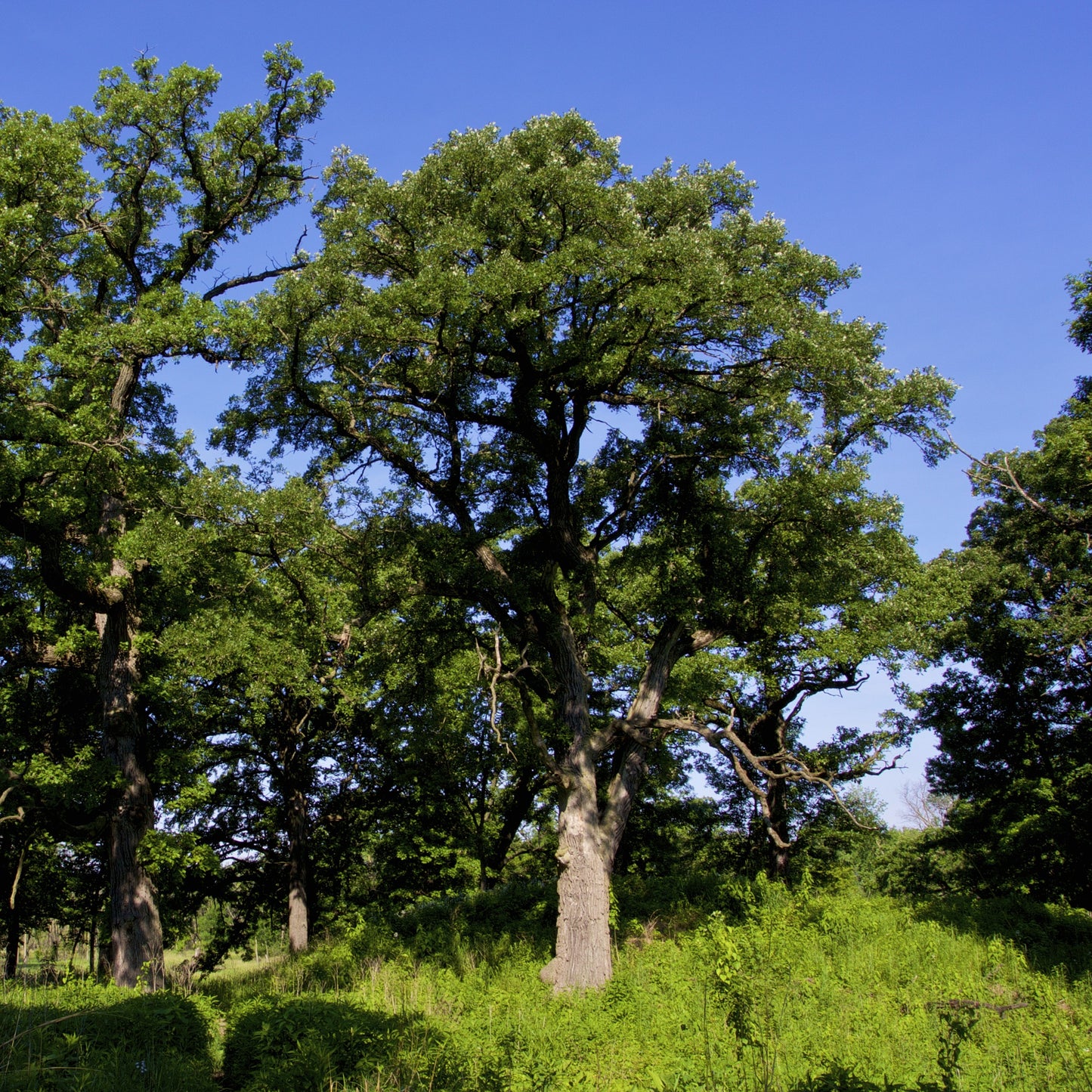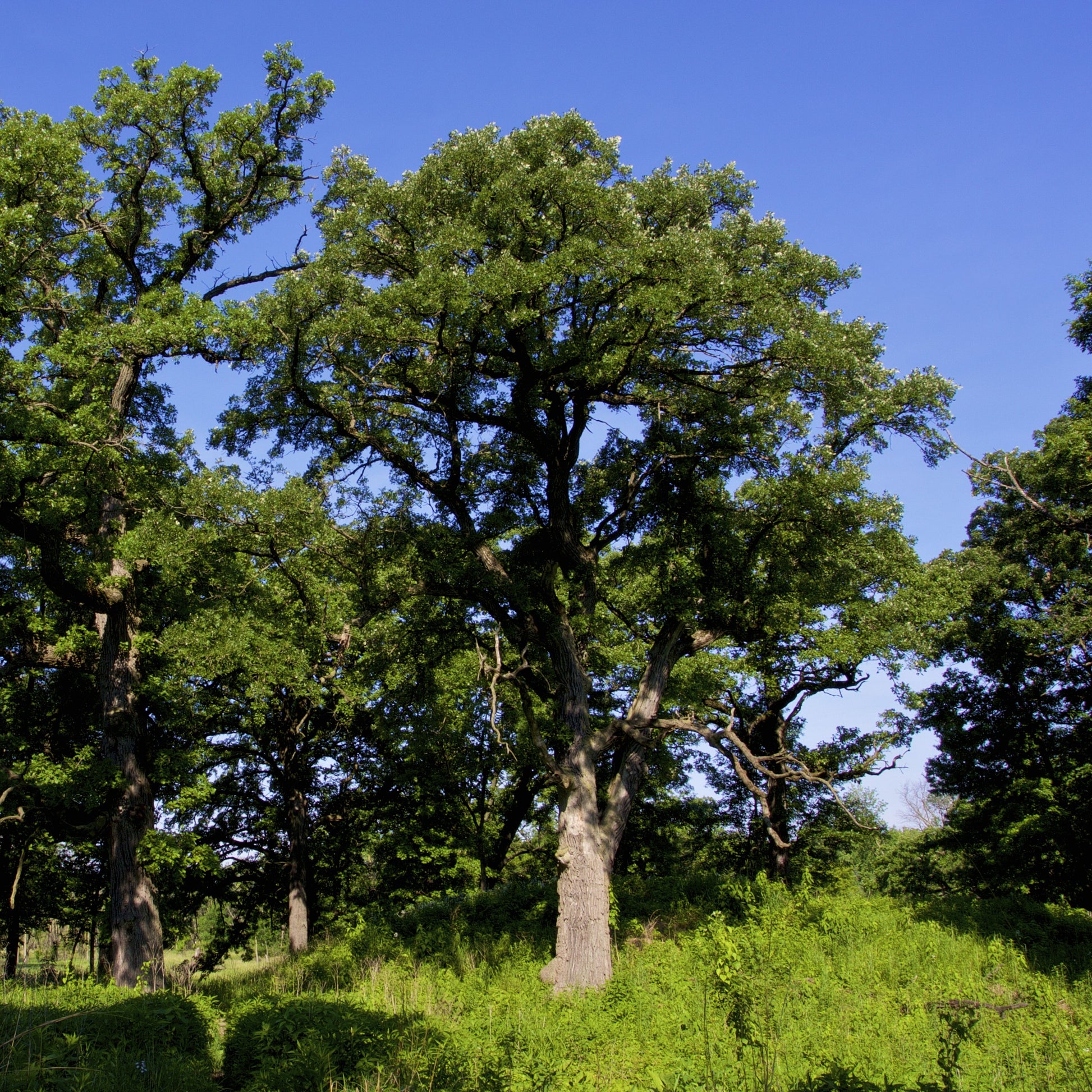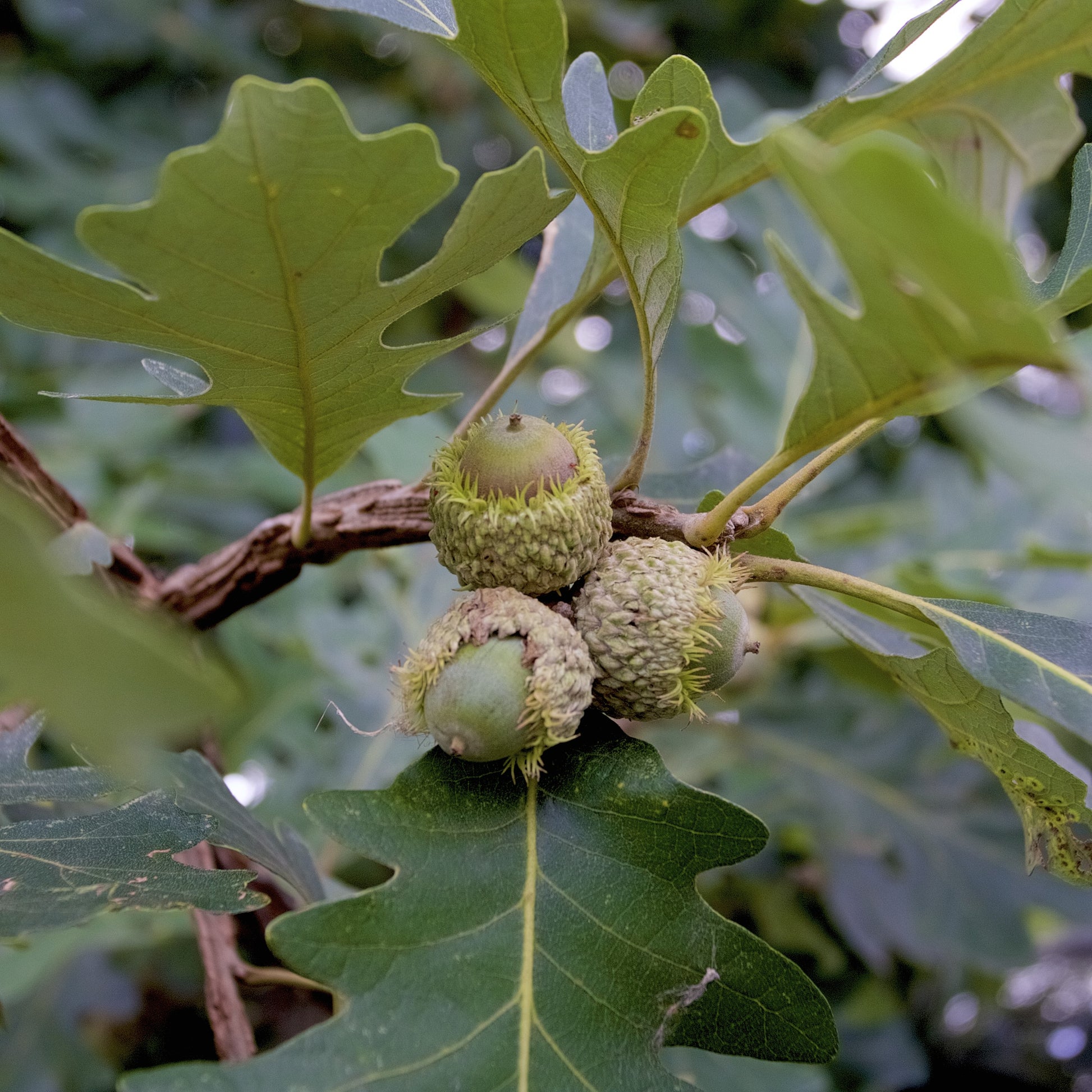Limited Quantities - Reserve Now For Fall
Bur Oak Tree
Bur Oak Tree
Couldn't load pickup availability
Quercus macrocarpa
Bur Oak Tree
The Bur Oak Tree is a majestic, slow-growing native oak known for its massive trunk, deeply lobed leaves, and giant fringed acorns. A true icon of the American Midwest and Great Plains, Bur Oak is one of the most resilient and long-lived hardwoods in North America, capable of withstanding drought, wind, fire, and urban conditions.
This tree is ideal for restoration projects, large landscapes, and legacy plantings, offering unmatched shade, wildlife support, and ecological value for generations.
Bur Oak Tree Overview
| Attribute | Details |
|---|---|
| 🌿 Botanical Name | Quercus macrocarpa |
| 🏷️ Common Names | Bur Oak, Burr Oak, Mossycup Oak |
| 🌳 Mature Height | 70–90 feet |
| 🌐 Mature Width | 60–80 feet |
| 📈 Growth Rate | Slow to moderate (12–18 inches per year) |
| ⏳ Lifespan | 200–300+ years |
| 🧊 USDA Zones | 3–8 |
| ☀️ Sun Preference | Full sun (essential for full canopy development) |
| 🧱 Soil Type | Tolerates clay, loam, rocky, and sandy soils |
| ⚖️ Soil pH | Slightly acidic to alkaline (6.0–8.0) |
| 💧 Water Needs | Low to moderate; drought-tolerant once established |
| 🍂 Foliage Color | Dark green in summer; yellow to bronze in fall |
| 🌰 Acorn Type | Large fringed acorns (mossycup) |
| 🐝 Pollination | Wind-pollinated; produces mast for wildlife |
| 🌿 Growth Habit | Broad-spreading crown with thick, gnarled branches |
| ↔️ Spacing | 50–80 ft apart for full canopy and long-term growth |
| 🏡 Landscape Uses | Shade tree, wildlife habitat, rewilding, legacy planting |
| 🧹 Maintenance Level | Low |
Environmental Benefits
🌳 Supports hundreds of native insect and bird species
🌞 Provides deep shade and climate-moderating canopy
🌰 Produces nutritious acorns for deer, squirrels, and turkeys
🌎 Excellent for carbon storage, erosion control, and long-term reforestation
Pros & Cons
| ✅ Pros | ⚠️ Cons |
|---|---|
| 🌿 Incredibly resilient and long-lived | 🐢 Very slow growing in early years |
| 🌰 Produces large acorns that support diverse wildlife | 🍂 Leaf and acorn drop can create cleanup needs in maintained spaces |
| 🌞 Thrives in dry, poor, and compacted soils | 🪵 Needs plenty of space for full development |
| 🧬 Native species with high ecological value | ❄️ Takes decades to reach full maturity |
| 🌾 Excellent for windbreaks and prairie restoration | ✂️ Minimal pruning needed, but early shaping may be necessary |
Planting & Care Guide
🛁 Water thoroughly before and after planting to establish roots
🕳️ Dig a hole twice the width of the root zone; plant at existing soil level
🌾 Apply 3–4 inches of mulch around the base, avoiding contact with trunk
💦 Water regularly during the first 2–3 years, especially in dry conditions
✂️ Prune in late winter to remove crossing or damaged limbs in young trees
🧪 Fertilize only if soil is nutrient-deficient; thrives in naturalized conditions
The Bur Oak Tree is a legacy species that delivers shade, strength, and ecological richness to every landscape it inhabits. From prairie restorations to homestead backdrops, this iconic oak grows slow but mighty—anchoring ecosystems and memories alike for centuries to come.
Share




